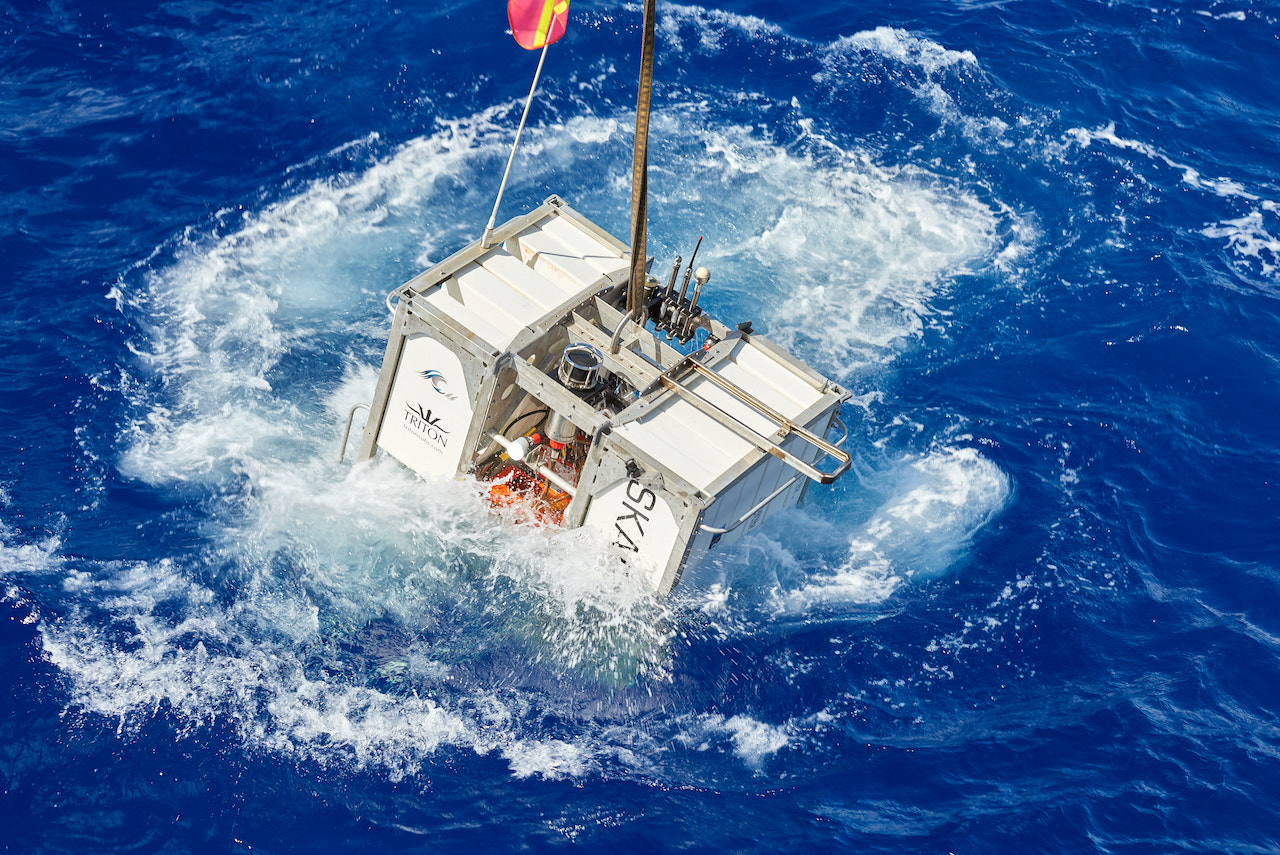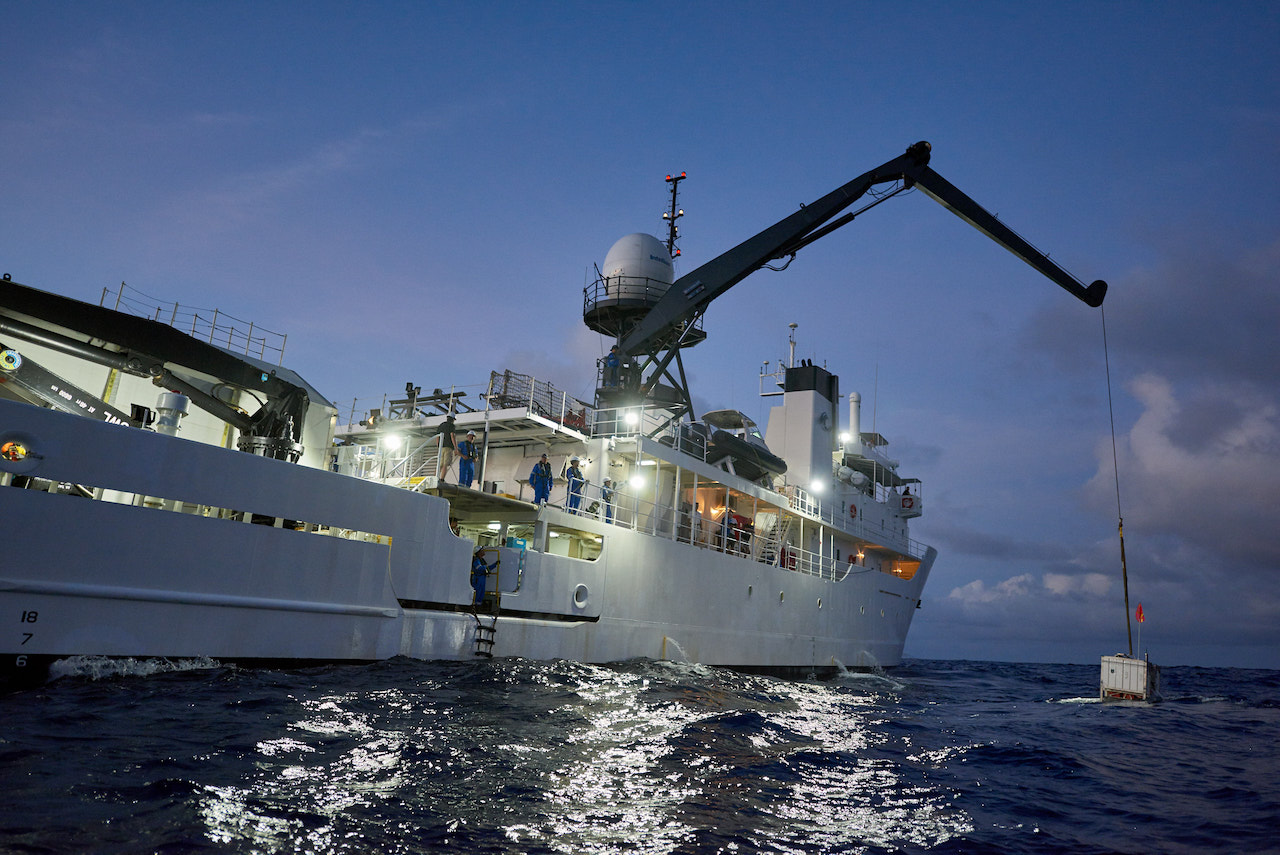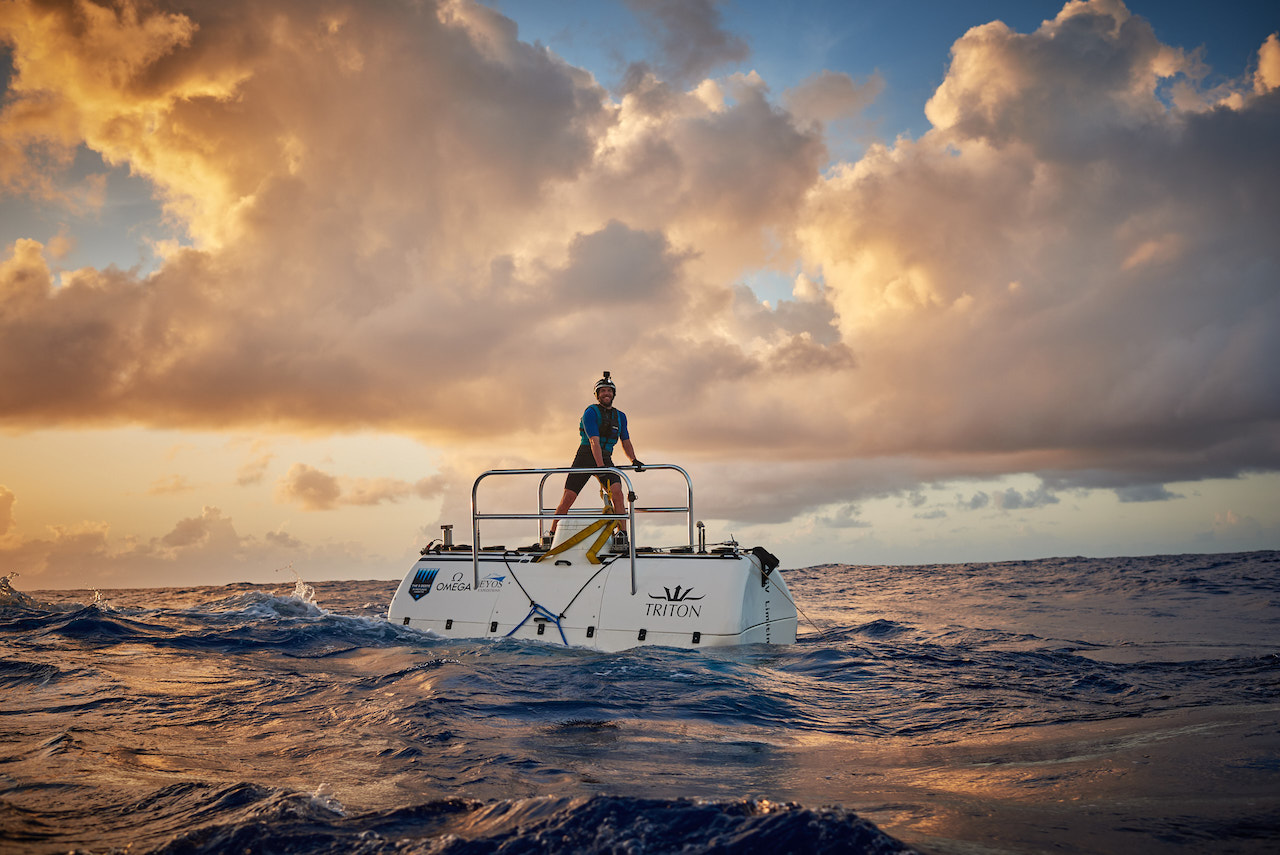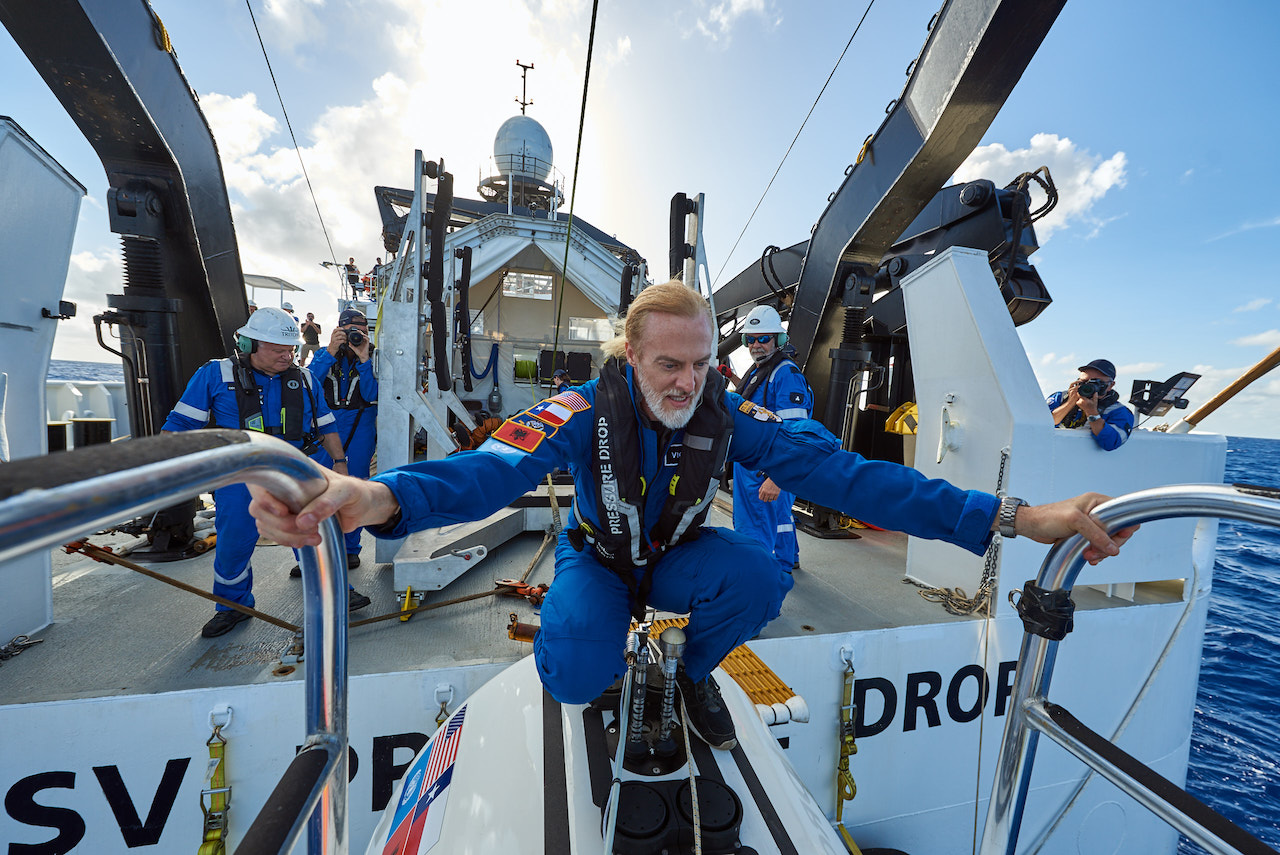We talk deep sea adventures and the need for a better understanding of the world beneath the waves with explorer and submersible pilot Victor Vescovo, founder of Caladan Oceanic.
Founder of Caladan Oceanic, a private company dedicated to the advancement of undersea technology and supporting expeditions to increase the understanding of the oceans, Victor Vescovo is a former Commander in the US Navy with a passion for exploration. He has summited the highest peak on all seven of the world’s continents, including Mount Everest, and skied at least 100 kilometers to both the North and South Poles. With the completion of the Five Deeps Expedition in August 2019, Vescovo became the first person in history to have been to the top of all the world’s continents, to reach both poles, and to descend to the bottom of all its oceans. He also holds the record for the most dives to the bottom of Challenger Deep, the deepest point on the planet, a total of fifteen times. In June 2022 he traveled 100km into space on Blue Origin’s New Shephard-21 mission.
You’ve just finished a two-month expedition of the Great East Japan Earthquake area, including dives into its deepest ocean trenches. What inspired this epic journey and what do you hope to reveal?
We wanted to achieve several objectives, including investigating the areas at and around the Great East Japan Earthquake, to see how the marine environment was affected. We also wanted to use our time in the larger area to make the first human descents to the bottom of the Ryukyu, Izu-Bonin-Ogasawara, and Japan trenches. Given that the national Japanese submersible, Shinkai, has a maximum depth limit of 6500 meters, we saw an opportunity to go much deeper with my submersible the Limiting Factor – which can go to any depth. So we were able to work with our Japanese allies to explore areas of the trenches which they had never been able to before, and even take their scientists there personally. That was a wonderful opportunity that we wanted to make happen, and discover what we could about the geology of the region and the characteristics of the marine community at those extreme depths.

Of all the world’s deepest places, why did you choose to explore the seas off Japan?
Well, no one had ever been to the very bottom of these trenches and with our system, we could dive there with the Japanese. It was a wonderful moment when I took down Dr. Kutso Michibayashi to the bottom of the Izu-Bonin-Ogasawara trench, making him the deepest-diving Japanese in history. That was a record that had stood since the 1960s and it was great to provide that opportunity to the extremely expert Japanese marine researchers. Additionally, there is a place in Japanese waters, the Boso Triple Junction, that has three tectonic plates slowly colliding together. There is only one other place on the ocean floor that has that dynamic, so it was a great place to see what that unusual geology was like and what life might live there.
Would it be fair to say exploration was in your blood?
Perhaps. I do know the most dangerous thing my parents did when I was very young was provide a bicycle to me. I immediately roamed very far, and very wide – probably dangerously so – among the streets and fields of Dallas, Texas. I also learned how to fly when I was nineteen years old, I’ve climbed mountains for over thirty years, and now have been going down to the bottom of most of the world’s ocean trenches. Yes, I think it’s fair to say it is just something in me that I need to do — explore.
How do you keep your cool when you’re thousands of feet beneath the surface with little between you and the crushing depths?
I think part of it is just my nature — I’m not that excitable and tend to be very analytical and procedure-driven. More than a few people have described my personality a bit like the constantly logical and calm Spock from the Star Trek TV series. But a big part of it is training as well. I was a military officer for 20 years and have flown civilian jets and helicopters, so in that training you are taught to not let your emotional responses take control over you during stressful times and instead calmly analyze the situation and take the corrective measures you need to in order to correct whatever has gone wrong and get home safely. Panic is never the right answer in any stressful situation. So it gets trained out of you through repetition and experience.

You’ve also discovered several shipwrecks including most recently the USS Samuel B. Roberts off the coast of the Philippines. Why is it so important these wrecks are discovered?
I have always been extremely interested in military history. In fact, the first book I ever checked out of a library was a military history book. I really didn’t understand the text much, but I loved all the maps. So I have always been drawn to military wrecks since they are physical reminders of things that actually happened many years ago and work as a bridge between our current time and those times past when people did extraordinary things in defense of their countries and ideals. Finding the wrecks is not only very exciting and a great technical achievement, but it also gives us an excuse to retell the stories of the people and ships and remind them of the sacrifices that so many people made so we could live the way we do. It can never be taken for granted and the sacrifices the people on these ships made are just extraordinary.
Tell us about your partnership with EYOS Expeditions.
When I was planning my first big marine expedition, to locate and journey to the bottom of all five of the world’s oceans, I realized that I needed a logistical partner who could help me navigate all of the details that needed to be done in advance to make it possible. There was crewing my vessel, transporting them all over the world, working with governments and organizations to get permits, refueling and provisioning, standing up a science program with scientists, working with media — so many details needed to be addressed and I was busy just refitting the ship and building the submersible. EYOS has a stellar reputation for doing these things, so I met with them early in the process and realized they would be a great partner for me. And we’ve been working together ever since, going on six years.

In addition to your descents, you’ve traveled to the edge of space with Blue Origin; should we be looking to space or is there much to discover here on earth?
We need to do both. Our world is so rich that we shouldn’t have to sacrifice research in one at the expense of the other. We have an enormous amount still to learn in the oceans since more than two-thirds of it remains completely unexplored. And as for space, well we have also barely begun to scratch the surface of what we could learn just in our own solar system much less deep space. They offer potentially very different discoveries, but they could also be related. For example, I would argue that the very deep places I’ve visited in the ocean trenches might bear more resemblance to the environments we might find on other planets than what we experience on land. The exotic life forms there, living in such extreme environments, may be closer cousins to extraterrestrial life than anything else we regularly encounter in our zoos. I think it is an extraordinary time to be alive as we keep pushing the technical boundaries of exploration in space and the ocean. We must do both.
What will your next expedition focus on?
It is very likely that I will sell my diving system to another organization soon, given the prodigious expense of maintaining it and personally paying for all of my expeditions. However, doing that will allow me a bit of a breather to study all the technical things that can be improved in deep ocean diving and go back into the workshop to come up with solutions for a next-generation manned submersible. So, my next expeditions may well involve the use of autonomous or remotely-operated underwater vehicles that may allow us to explore more of the deep ocean, faster, than we could with a manned sub while also testing out new solutions to put on a next-generation submersible. My biggest driver has always been technological innovation, so that’s what I will continue to do and then figure out the best, most extreme environments, to try and make them work. Deeper wreck dives, under-ice operations, deep-ocean detailed mapping, who knows? I’m looking forward to trying to do them all
For more Interviews click here.

